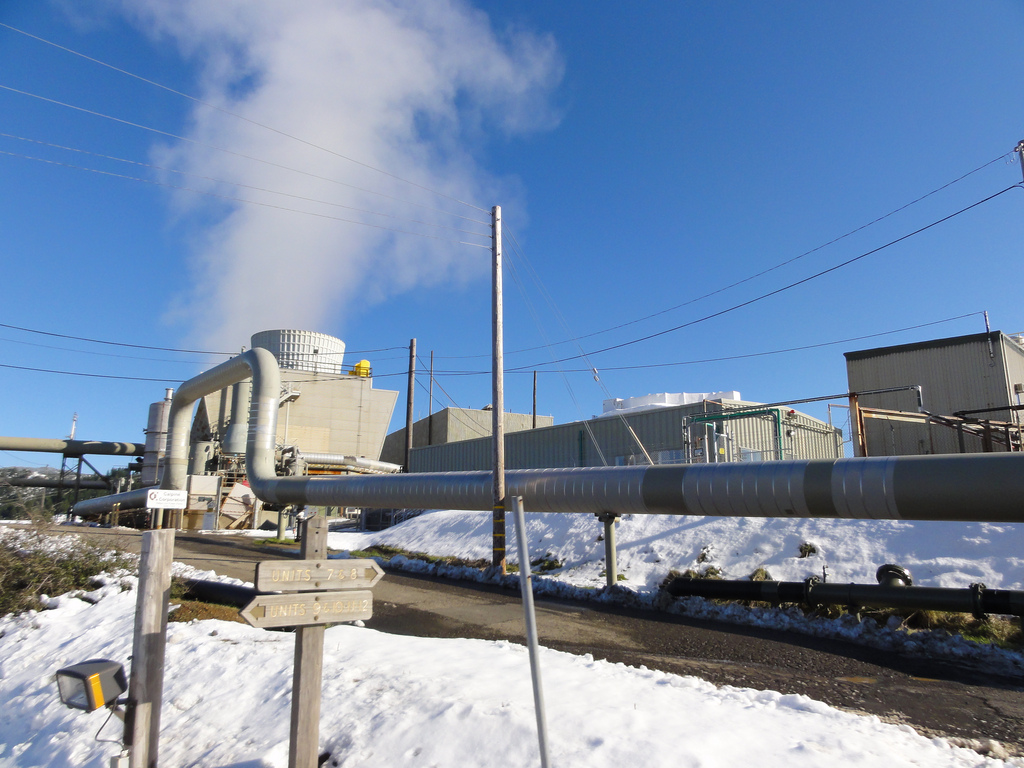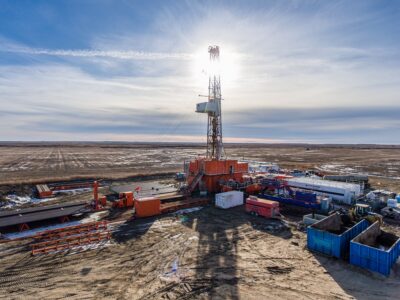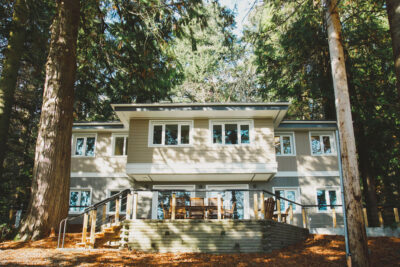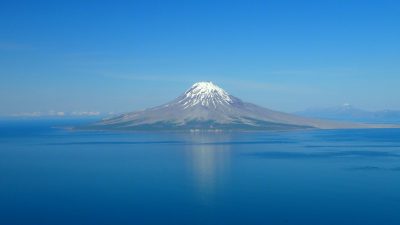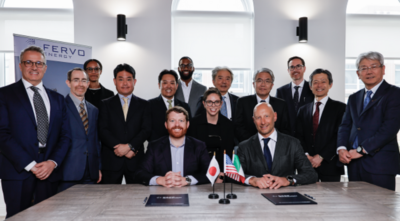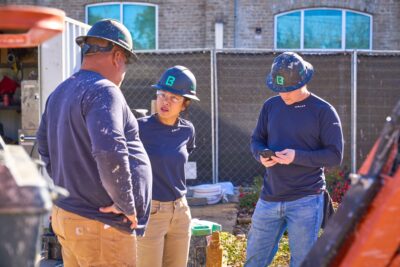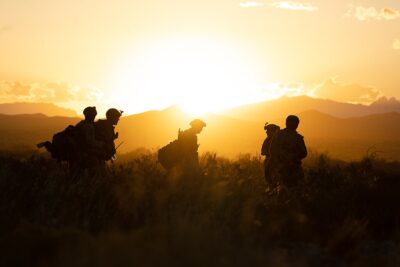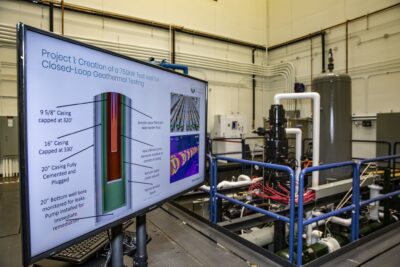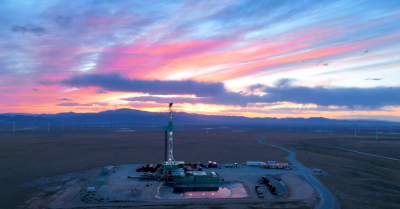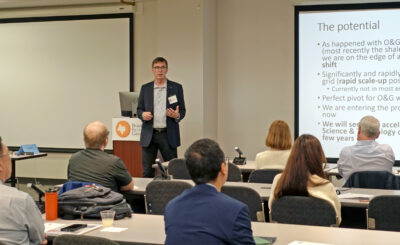Calpine updates on EGS demonstration project at the Geysers in public meeting
In a public meeting, Calpine provided an update on its EGS demonstration at the Geysers. The project, a collaborative effort between Calpine, Lawrence Berkeley National Laboratory and the Department of Energy, is to demonstrate the ability to stimulate hot rocks.
Reported yesterday, Calpine held a presentation on its Enhanced Geothermal Systems Demonstration project at the Geysers.
A local paper covered the event that took place August 18, 2011. ” If successful, Calpine believes the “Enhanced Geothermal System Demonstration Project” will both increase energy production and provide a model for other areas, although it has raised concerns for some community members about the potential for increased earthquake activity.
In a public update at the Cartwright Geothermal Visitors Center in Middletown on Thursday, Aug. 18, geophysicist Craig Hartline and principal investigator Mark Walters presented a slide show and discussed the technology that will be tested in the northwest portion of The Geysers.
The project is a collaborative effort between scientists and engineers from Calpine Corp., Lawrence Berkeley National Laboratory and the Department of Energy, which is co-funding it.
The work involves the creation of an engineered reservoir and injection of cold, treated wastewater into deep rock where temperatures reach 500 to 750 degrees Fahrenheit.
Calpine’s goal is to demonstrate the ability to stimulate hot rocks by monitoring their response to water injection.
The desired result: increased fluid flow for producing electrical energy. That is, enough power from a single well to serve 6,000 more homes.
Calpine’s demonstration area is 6.5 miles from Cobb and nine miles from Anderson Springs. According to Hartline, the project is situated in the northwest section of The Geysers because the southeast field lacks sufficient temperature contrast.
The company also considered the distance from Cobb and Anderson Springs, where residents have protested expansion of plant operations due to concern about earthquakes.
“One reason this area was picked was due to its location relative to communities,” Hartline said.
A 4,800-foot injection pipeline for the project was completed last December. Next month, the first water injection “step tests” will begin, according to the presentation.
There are two ways to move rock: through heat or pressure. In this case, tiny fractures created in rock will come from thermal effects – heat– rather than pressure.
According to Hartline, the tests will be “well below fracture pressure” and are designed to avoid potentially damaging hydraulic fracturing.
“We want a cloud of fractures,” Walters said – not a single fracture. And that means low pressure. “High pressure would not create a cloud of fractures.”
Walters said they are searching for “the sweet spot,” or optimal rate of injection that will generate the most steam at the surface. They now believe it’s about 500 gallons of water per minute, but the plan is to start small and gradually increase the amount to find the most efficient rate.
“We want 500 gallons per day, per well,” Walters said.
No new water will be added for the project, according to Walters.
Hartline said a major goal, vital to sustain operations, is to put water back to recharge the reservoir. Calpine hopes to “approach 100 percent fluid replacement for sustainable electrical production,” according to the slideshow.
At the end of the talk, Hartline and Walters took questions from the audience.
One attendee asked that if testing is successful, will it include the entire field?
“No,” Walters replied. “We’re trying to prove the concept.”
Another attendee asked about naturally occurring earthquakes versus those triggered by plant operations.
Hartline said that the region is naturally seismic, but since The Geysers began operation in 1960, the number of earthquakes has been increasing and is attributed to the injection of fluids.
“We know the bulk of seismicity at The Geysers is induced,” Hartline said.
He stressed that they are mostly microquakes, however and that there are no known large faults in the work area.
“Anything below 3.0 is considered a microearthquake,” Hartline said.
In regard to earthquakes induced by injection, “the important thing is that they’re not all the same magnitude,” he added.
But the promise of geothermal has also sparked concerns about earthquakes as new drilling technology develops.
In 2009, AltaRock Energy had undertaken an “engineered” geothermal system drilling project in an old Northern California Power Agency geothermal well above Anderson Springs The goal was to fracture bedrock in order to inject water.
That project later was suspended after scrutiny from the national press and the company’s announcement that it had “encountered a number of physical difficulties” in drilling the well, as Lake County News has reported.
Calpine told Lake County News in late 2009 that its project – which is “enhanced,” not “engineered” – would not be the same.
Currently, Lawrence Berkeley National Laboratory is conducting studies to understand how injection triggers seismicity.
There are 31 seismic monitoring stations at Lawrence Berkeley National Lab, with several added in advance of injection at The Geysers.
“No potential damage” is expected to occur from the injection in either Cobb or Anderson Springs, but in both locations, strong motion stations are installed, according to the presentation.
Hartline told the audience about a public voice mail hotline for reporting earthquakes (877-4-GEYSER).
In response to calls they’ve received on the hotline, they are doing “some investigation,” he said.
They also are working on improved 3D modeling that will help detect fault and fracture surfaces.
The Geysers steamfield supplies about 25 percent of the state’s renewable energy and 40 percent of U.S. geothermal power, according to Calpine.
“This field is an incredible resource,” Hartline said. “We’re trying to make sure it’s managed into the future.”
Source: Sheila Pell, Lake County News
